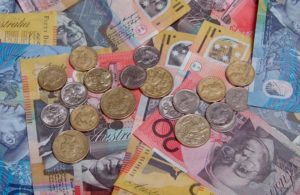 Australian dollar traded lower against its US counterpart on Tuesday, following Reserve Bank of Australias decision to keep its benchmark rate unchanged at the current record low level, while banks Governor Glenn Stevens said that the national currency was “uncomfortably high”.
Australian dollar traded lower against its US counterpart on Tuesday, following Reserve Bank of Australias decision to keep its benchmark rate unchanged at the current record low level, while banks Governor Glenn Stevens said that the national currency was “uncomfortably high”.
AUD/USD touched a session low at 0.9464 at 3:50 GMT, after which consolidation followed at 0.9482, still down 0.30% for the day. Support was likely to be received at November 1st low, 0.9422, while resistance was to be encountered at October 28th high, 0.9623.
At its meeting on policy earlier today the Reserve Bank of Australia (RBA) decided to leave its benchmark interest rate unchanged at the current record low level of 2.50% in line with expectations.
However, the Aussie lost ground against all of its 16 major peers, after RBA Governor Glenn Stevens stated today that the national currency was “uncomfortably high”. “The Australian dollar, while below its level earlier in the year, is still uncomfortably high,” Stevens said in a statement. “A lower level of the exchange rate is likely to be needed to achieve balanced growth in the economy.” He also said that inflation rate was in consonance with the central banks targeted range, but, on the other hand, economic growth of Australian economy remained sluggish. According to Stevens, private demand in other sectors, excluding mining, is expected to increase at a faster pace, but such a scenario remains still uncertain.
“The RBA is still very much in a wait-and-see neutral stance,” said Greg Gibbs, a senior foreign-exchange strategist at Royal Bank of Scotland Group Plc in Singapore, cited by Bloomberg. “The currency is responding to comments similar to those made by Stevens last week.”
RBA rate decision came a day after the Australian Bureau of Statistics reported that nation’s retail sales rose at the fastest pace in seven months in September. Sales climbed 0.8% in September compared to a month ago, which exceeded preliminary estimates of a 0.4% monthly gain, after in August retail sales grew 0.4%.
In addition, the index of house prices in Australia rose 7.6% in Q3 2013 compared to Q3 2012, or the fastest pace in three years, in line with projections, after in Q2 house prices climbed 5.4%, a revision up from a 5.1% climb previously.
Today the Australian Industry Group (AIG) said that its Performance of Services Index (PSI) came in at a reading of 47.9 in October, after it stood at 47.1 in September. Values below the key level of 50.0 are considered as an indication that activity in the sector has contracted.
Nations trade balance deficit probably shrank to 500 million AUD in September from an 815-million-AUD deficit during the previous month, according to the median estimate of experts. Official data is scheduled for release tomorrow.
Lastly, the yield on Australian 10-year government bonds was little changed at 4.14%, after hitting 4.16% on Monday, or the highest level since October 17th.
Elsewhere, the Aussie was lower against the euro, with EUR/AUD cross gaining 0.16% on a daily basis to trade at 1.4237 at 6:45 GMT. AUD/NZD pair was losing 0.14% to trade at 1.1470 at 6:47 GMT. The Australian currency has appreciated 4.7% during the past three months among the 10 developed-nation currencies, which are tracked by Bloomberg Correlation-Weighted Indexes, or the best performance within the group. New Zealand dollar has gained 4.2% during the same period.





